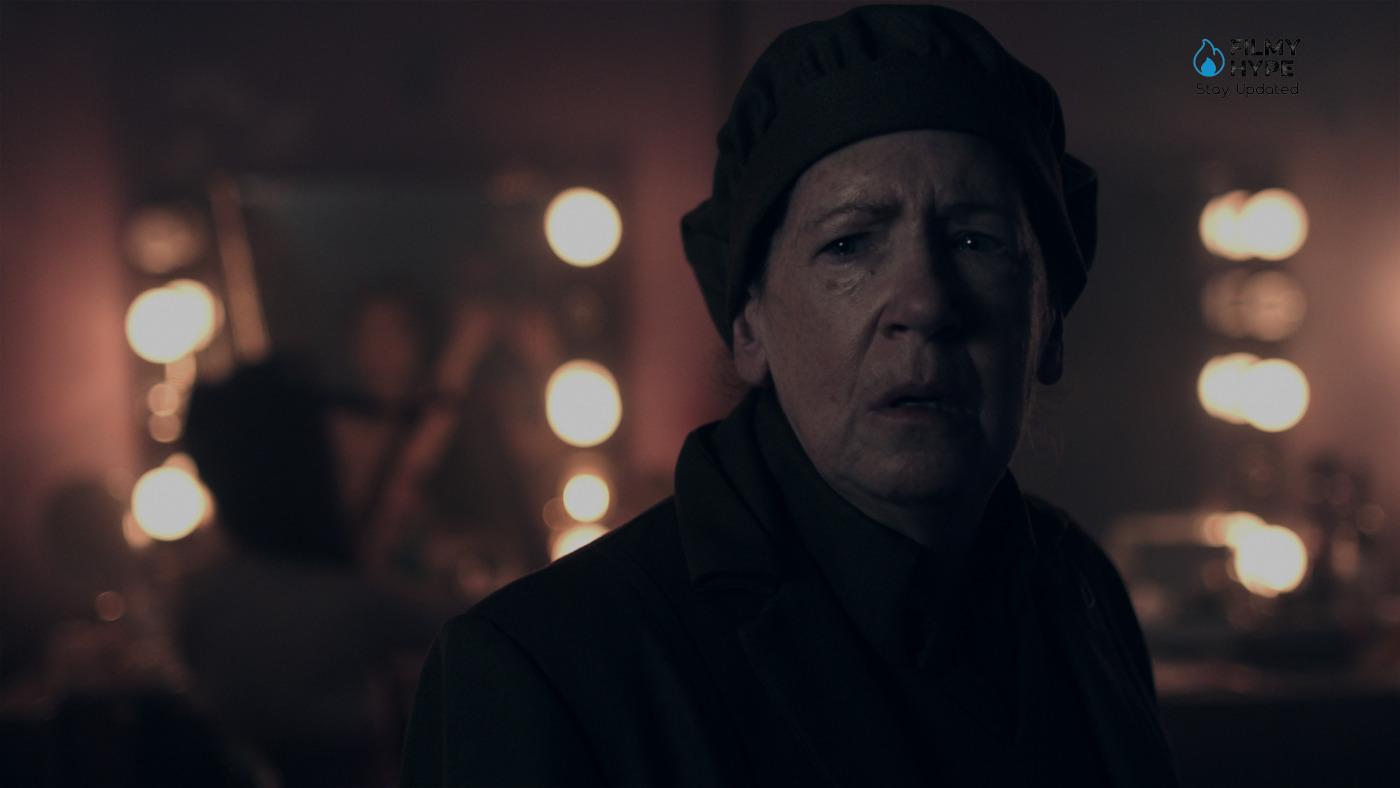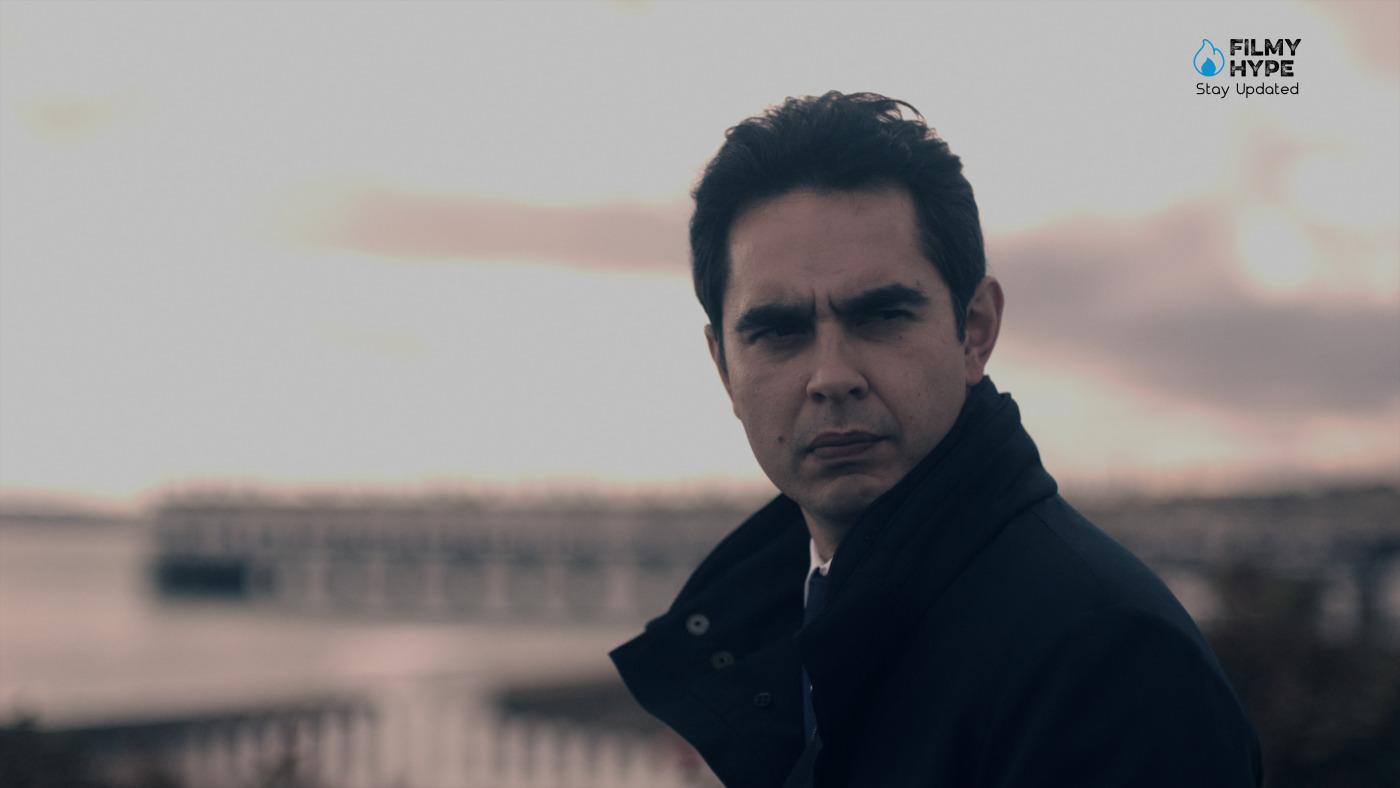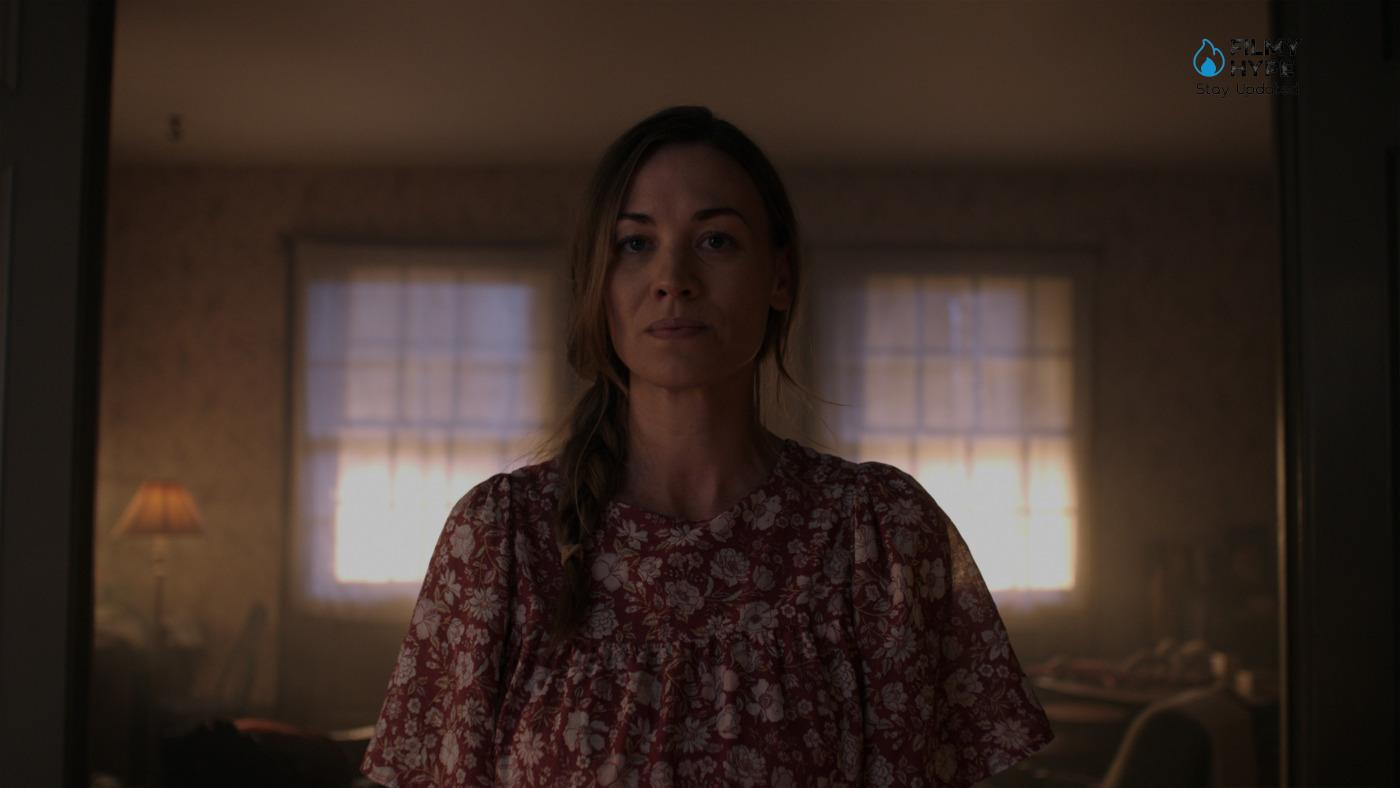The Handmaid’s Tale Season 6 Review: This Season Returns To Its Origins Without Losing Depth
The Handmaid’s Tale Season 6 Review: Two years after the launch of the fifth chapter, The Handmaid’s Tale Season 6 returned on April 8 on Hulu. One of the most anticipated series end of the small screen that puts an end to one of the most beautiful series ever taken from one of the most acclaimed dystopian novels of modern literature written by a forward-looking Margaret Atwood who, with this book written in the 80s seems to have predicted, unfortunately, the future. The Handmaid’s Tale is ready to present to the public its conclusive act which, just like the same series, has every intention of making history with Elisabeth Moss who will last take on the role of June Osborne and will delight behind the camera as director of four episodes of The Handmaid’s Tale Season 6, the first two and the last two. A train is launched that runs free and fast, carrying hope in a green and dreamy environment. It was the finale of Blade Runner. Instead, only the beginning of The Handmaid’s Tale Season 6, the sixth and final season of the cult series, is available on TIMVISION from April 8 with the first three episodes and then with a new appointment every week until May 27 for the series finale.

That train journey is the beginning of the last story of the handmaid, the one that will close the games. On that wagon are June and Serena Joy, the duelists, the two sides of the same coin, friends and enemies. Since the first season, they have been the charismatic figures of history, the two different ways of being a woman. Two natural leaders on their sides. But also, two opposites are destined to attract. The Handmaid’s Tale Season 6 becomes a more choral story; it follows more points of view and not only that of June, but, after having previewed the first three episodes, everything suggests that it will be a game of two- the one between June and Serena, to close the story. There will still be talk of the condition of women in today’s world. But after his departure in 2017, The Handmaid’s Tale was written in a deeply changing America. The new season seems to want to tell us about this too, a country in deep identity crisis and experiencing a split. Designed a few years ago, The Handmaid’s Tale Season 6 seems to be almost prophetic.
The Handmaid’s Tale Season 6 Review: The Story Plot
The first episodes immediately reactivate the narrative engine with the theme that has always crossed the series: the conflict between personal survival and collective commitment. June, on the run with her youngest daughter, tries to build an escape route to freedom, but her personal history is inextricably intertwined with that of an entire oppressed nation. The meeting with Serena Joy, once sharp, now an ambiguous ally, makes it clear how weak the border between victim and executioner can become in authoritarian regimes. In parallel, Luke’s capture and tensions within the Mayday rebel group call into question all certainty. The series proposes the founding dilemma: Is it possible to fight power without becoming like power itself?
The Handmaid’s Tale Season 6 Review and Analysis
The first three episodes of The Handmaid’s Tale Season 6 are a taste, a premise, and a quiet first of a wonderful storm that we expect with the great finale of this series. June fights to defeat Gilead. Luke and Moira unite against all resistance. Serena walked over to Revere Gilead while Commander Lawrence and her sister Lydia recounted what they had done. Then, Nick Costeretto faced a difficult struggle and an internal struggle between what he wanted and what he was right to do. In this retelling of the story, we imagine in our hands the times, the colors, the story, and the characters. Before we leave and go to the action, the third episode is ready to return to the protagonist. The beauty of this series, however, as much as it is the action, has always been its ability to give importance to all the description, all the pauses, all the slowness, all the glances, and the silences.
It is not a story that requires the force of continuous shots of the scene or continuous dynamic moments to keep the public’s attention high. On the contrary, it remains a thrilling and wonderful being because of its square face, an unexpressive detail. And his secret is exactly this. One of the characters that strikes the most in this grand finale, tracing the protagonist June, is Serena. We can undoubtedly consider the character with the evolutionary arc the most interesting and representative of the entire series. Together with her, she distinguished Janine together with the extraordinary Zia Lydia, always iconic and controversial and ready for a memorable finale. And then there is Nick Inedito in The Handmaid’s Tale Season 6. All the faces with the emotions that they can no longer hold on to, the sense of guilt that they can no longer manage to overcome, face a great inner dilemma. Expect everything from the finale of The Handmaid’s Tale, but above all, expect the magic that this series alone has brought to the level of luxury.

After enjoying three episodes of the grand finale of The Handmaid’s Tale, we have received confirmation that series of this caliber will be difficult to get back on TV, unfortunately. It will not be easy, in the future, to have in front of us a story with such expressive, interpretative, narrative power, a story in degrees of transcendence at every moment and always going towards that of the “politically correct”, of the “socially acceptable”, of the visually digestible. The Handmaid’s Tale is a series that has created a first and a second by destroying every point of reference serially by continuously presenting new concepts of beauty, of temporality, of entertainment. Working with a very refined style that comes in contrast with the theme and a story of unseen violence, this series is the only one that makes the difference, becoming a stimulus to open the mind, change the society, make the revolution, and do it through a form of art that is little poetic. After all, to open your eyes and mind, it is not enough to launch messages to the public; you must go beyond, dare to be sporty, outrageous, socially unacceptable, visibly violent, and even immoral.
The Handmaid’s Tale has talked about topics such as feminism, climate change, fertility, sexual violence, dictatorship, religion, and the rights of minorities long before it became “fashionable”, and it has always done so with a power, an originality and at the same time a sophistication that is difficult to find, today, in no serial products all similar to themselves. This is a series that tells the story of the small screen, and its finale is soon to do the same. This was revolutionary as no series was before it, and it should take its merit right up to the end. And we are no longer waiting to confirm this beloved serial for the last time, watching each episode after episode until the grand finale of the series and getting the ultimate confirmation of what it means to not only make a series but also to become a leader.

After five seasons of The Handmaid’s Tale, we are still trying to understand Serena Joy. Are you a religious fanatic? Are you an opportunist? Are you at work for a bigger good? Is she one who thinks only of herself? Yet, that relationship that has somehow been established between her and June, between villain and protagonist, distant but inextricably linked, exists and lives on a balance hanging by a thread. They approached and walked away several times. But their alliance, always in pectore and never really accomplished, is one of the keys to history. What Gilead missed, whether he is inside or outside his territory, is the lack of true female solidarity, which unites all women in a common front. And, if you think about it, it is something that is not yet accomplished even in our society. There is still talk of a female condition in season 6 of The Handmaid’s Tale. But there is more and more talk about an America that is no longer what it was supposed to be: the land of democracy, freedom, and second chances.
The incredible thing these days is that reality is going beyond fiction. And that America today, Trump’s America, is becoming Gilead. Democracy is dying, and today, it seems more and more like a dictatorship. The United States is no longer united. And that American flag, with only two stars on a blue field, which we see waving in Alaska, is a disturbing symbol. At times, there seems to be parts of Civil War by Alex Garland, another extremely prophetic work. The Handmaid’s Tale Season 6 is full of twists (the first episode, directed by the same Elisabeth Moss, has two remarkable ones), suspense, and that continuous sense of danger, that feeling of never feeling safe anywhere that has been one of the figures in the series from the beginning. It is a series that still speaks to us about the relationship between man and woman, but also of religious fanaticism and politics, and those facade operations that governments do to hide reality: the unbearable fiction of New Bethlehem, the new city born to welcome the exiles from Gilead and make the regime more attractive to them, is the symbol of many situations of this type.
One of the strongest thematic nuclei of the sixth season is that of forgiveness. The series raises a question as complex as it is current: Is it right — or even possible — to forgive those who have allowed or facilitated the birth of an inhuman regime? June and Serena, living symbols of this moral ambiguity, are forced to confront their past and their present in a painful dance of temporary alliances, suspicions, and grudges. But the theme also extends to the other characters: what to do with those who, like Nick, contributed to the system but then tried to oppose it? And who, like Lawrence, tries to “clean up” Gilead without giving up their power? The series does not grant discounts and refuses to adopt a simplistic view of the concept of redemption. One of the most welcome surprises of the season is the calibrated use of black humor and a more dynamic direction. Some jokes, unexpected but perfectly in tone, manage to break the tension without ever debasing it. It is the sign of a series that has gained awareness of its means of expression and knows when to hit hard and when to let the viewer breathe.

Photography, editing, and musical choices — including some remarkable moments with iconic songs — further enrich an aesthetic system that, even after six seasons, continues to be among the most recognizable of contemporary TV. Despite all its limitations, The Handmaid’s Tale remains a fundamental work. This sixth season does not seek consolation or easy catharsis. His anger is alive, his moral ambiguity is intact, and his political urgency is more powerful than ever. Each character, even the minor ones, receives the right space to shine, to fall, and to rise again. It is a series that has been able to renew itself without betraying itself, which has accepted complexity instead of fleeing it. The revolution is not a straight line, and The Handmaid’s Tale proves it strongly. Even without showing the outcome, he suggests that change is a long, tiring, but possible process.
These first three episodes, all put together, bring to the surface ghosts that the viewer thought he had lost forever. Hate and grudge, love and spirit, sons and daughters of all ages with their parents. The Handmaid’s Tale dialogue with primary needs, mix them by sinking with full hands into the soft belly of the lowest and highest feelings of the human and perhaps also of the divine/spiritual, of the natural concretions that make everyone who they are. Serena and June they have many lives, they can get back on track, they always make it and they emerge from their blood, unlucky, slabbed, without parts of the body and of themselves but they never give up, one because it has God, the other because it has a family, its strength and its courage. With an alternating montage, the two, always enemies and even adventure companions, live the journey of the heroine, always ready to recover to start fighting again. June is never afraid, or perhaps he always has it, yet he makes crazy decisions, he never loses focus, and he never forgets a promise made. She doesn’t want to put anything behind her because the ones she left behind are sisters with whom she shared fate and her daughter, Hannah, towards whom all her thoughts and love tend. There are times when you have to retrace your journey, remember what it has been, and live according to a principle: “it is not over yet”.

The series is a painful story of violence and abuse, a dystopia that hurts and that never gives peace, especially in a period in which the world rediscovers dark policies, daughters of the ban, oppression, and the ruthless will to limit the freedom of women and minorities. June is no longer DiFred, she has returned to being a free woman, at least in her name, but she carries within, in every cell of her body an anger, a torment, a desire to put things right, to save and incredibly in these last seasons the feeling is that Gilead is still calling – while before he was prison from which to escape. Elisabeth Moss’s character immediately embodied the role of heroine, tenacity, the desire to live even when she was forced to be an object, a doll in the hands of a master, her courage that made her a fighter even when the only possible way would have been to go crazy or kill herself. She is all in the narrative, the whole series is built on her, she is the star of this dystopian story, of a horror film, and indeed, from the beginning of the show, it is a sort of final girl. Like all the other sisters, they cling to life with their nails and teeth, fight for freedom and independence, and get up, being reborn from their ashes. Serena and June do it, but all the handmaids do it.
The Handmaid’s Tale Season 6 Review: The Last Words
The Handmaid’s Tale Season 6 confirms the visceral and political soul of the series. Set in America, it is increasingly similar to Gilead, it courageously faces the dilemmas of resistance, forgiveness, and identity. With extraordinary interpretations, a more fluid direction, and sharper writing, this season returns to its origins without losing depth. However, the series continues to ignore intersectionality and represent a resistance without historical memory. A season finale with no easy answers but full of the right questions. Each has its war to fight to put the pieces of a destroyed world back together. With these three episodes, The Handmaid’s Tale prepares spectators for this painful, crazy race towards the season finale of one of the series that has changed forever the narration about women and their journey towards freedom and emancipation. There is still a question to be answered: who has become June? We can imagine it, but we still have many episodes to fully understand it.
Cast: Elisabeth Moss, Yvonne Strahovski, Bradley Whitford, O-T Fagbenle, Max Minghella, Samira Wiley, Ann Dow
Created By: Bruce Miller
Streaming Platform: Hulu
Filmyhype.com Ratings: 4/5 (four stars)




